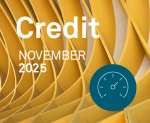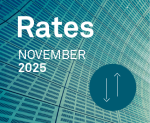
The battle for retail fixed-income investors
Greenwich Report
As retail investors poured back into bonds in late 2022, and the percentage of those bonds held directly grew from 32% at the end of 2021 to 51%—their highest level since early 2013—the market began to debate if a structural shift had occurred. This...
New

Total corporate bond market volume moderated in October following an exceptional September, with average daily notional volume (ADNV) at $51 billion—9% below last month’s quarter-end spike but still 4% above October 2024.
New

U.S. Treasury average daily notional volume (ADNV) traded in October came in just shy of $1 trillion, marking an 11% increase from October 2024.
New

OMS and EMS innovation: Where providers are investing
Greenwich Report
Professionals at buy-side firms are demanding technological advances and new cutting-edge tools to gain an advantage in the front office. Among a long list of new developments, workflow automation and interoperability stand out as top priorities...
New

The evolution of the U.S. Treasury CLOB
Greenwich Report
The U.S. Treasury central limit order book (CLOB) has been a cornerstone of the U.S. Treasury market for three decades, providing a platform for buyers and sellers to trade with anonymity, firm prices and instant execution.
Coalition Index for Transaction Banking – 1H25
Greenwich Report
Transaction Banking revenues remained stable in 1H25, with unchanged performance in Cash Management, and a marginal increase in Trade Finance following the recovery in Trade activity.
Coalition Index for Investment Banking – 1H25
Greenwich Report
1H25 Coalition Index Investment Banking revenues rose 13.3% YoY.

The derivatives market in Japan: Tapping into the potential
Greenwich Report
A healthy derivatives market is an important element to Japan’s plan to become a global leader in asset management.
